The iris flower has long been cherished for its beauty and elegance, but did you know that it also holds a deep symbolic meaning? In this article with Impeccable Nest, we will delve into the meaning of iris flowers and why they continue to captivate us today.
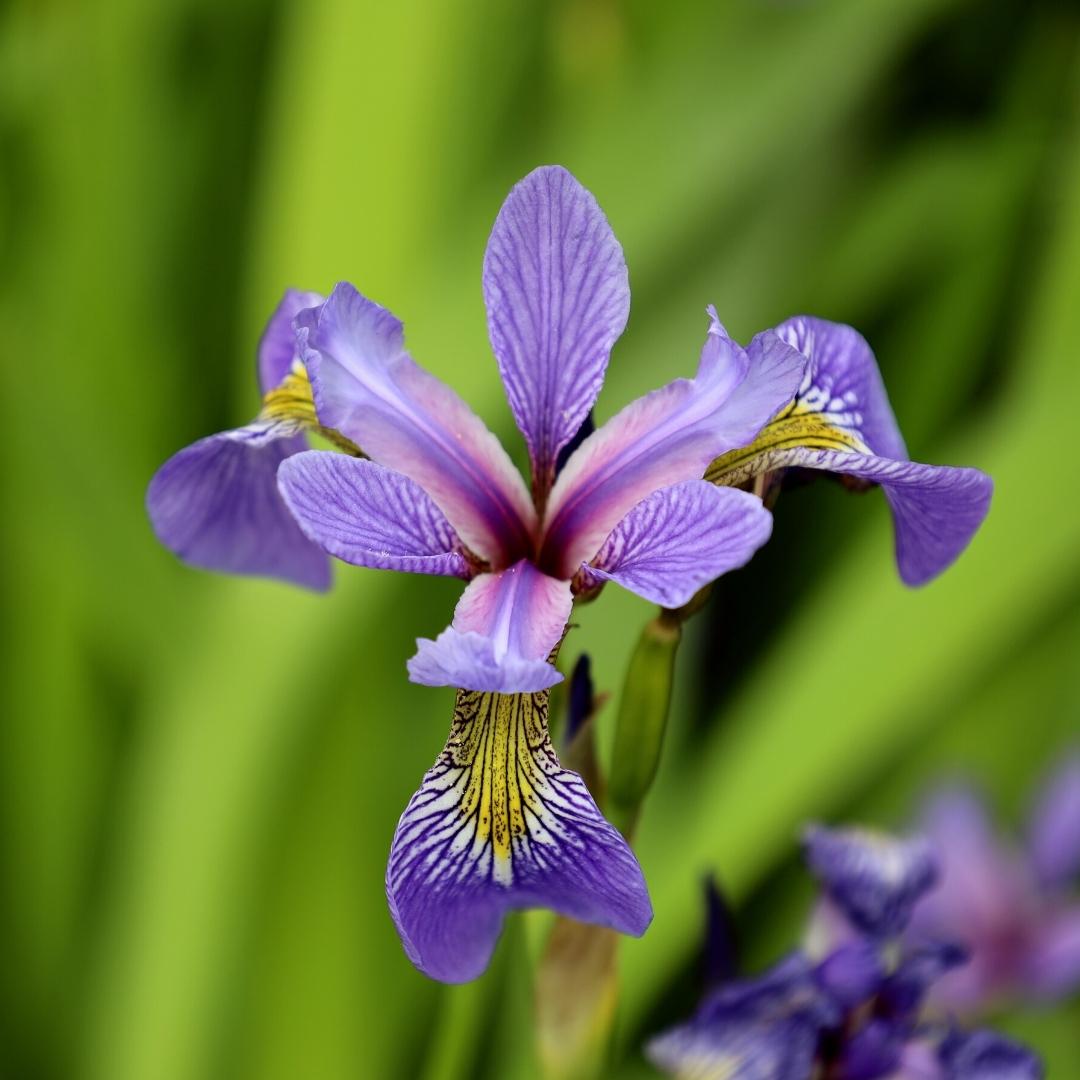
Understanding the Iris Flower Meaning
Iris flower has been known for centuries, and it holds significant meaning in various cultures. The iris’ name is derived from the Greek word “rainbow,” which speaks to its many colors. Iris flowers come in different hues, including white, yellow, purple, and blue, each with its unique symbolism. However, their general significance revolves around wisdom, valor, hope, love, and inspiration.
The three upright petals of the iris represent faith, valor, and wisdom. These traits are essential for any wise leader or anyone who desires to lead an exemplary life. Faith represents one’s trust in a higher power, while valor refers to courage, strength, and determination. Wisdom stands for knowledge, insight, and understanding, which are all fundamental aspects of good leadership.
On the other hand, the three falls of the iris represent hope, love, and inspiration. Hope represents optimism and positivity – a belief that things will get better despite current setbacks. Love represents affection, compassion, and kindness, which are crucial for building meaningful relationships. Lastly, inspiration represents creativity, innovation, and motivation, which are essential for personal growth and development.
In Greek mythology, purple irises were planted over the graves of women to summon the goddess Iris. She was the messenger of the gods and would guide the souls of women in the afterlife, just as rainbows bridge the divide between heaven and earth. This symbolism reminds us that even in death, there is hope and that our loved ones are in a better place.
The Iris Flower Meaning in Context
The symbolic meaning of irises varies across cultures, time periods and contexts. Here are some of the key associations of the iris throughout history:
Wisdom, valor, hope and trust in ancient Greece
The iris flower is an elegant and sophisticated bloom that has been admired for centuries. In ancient Greece, the iris flower held great significance and was highly regarded for its symbolism of wisdom, valor, hope, and trust.
The iris flower also held great symbolic meaning in Greek mythology. According to legend, when Hera, the queen of the gods, discovered that Zeus had fathered a son with another woman, she became enraged and transformed the baby into an iris flower. This myth has led to the belief that the iris flower represents royalty and power.
Furthermore, the iris flower was associated with the god Apollo, who was often depicted wearing a wreath made of iris flowers. As the god of light, knowledge, and poetry, Apollo embodied the attributes of wisdom and valor, which are also associated with the iris flower.
In addition to representing wisdom and valor, the iris flower was also thought to symbolize hope and trust. This is due to the fact that the iris grows tall and strong, even in difficult conditions, and its vibrant colors are reminiscent of the beauty and vitality of life.
The iris flower held significant meaning in ancient Greece, representing various virtues and attributes such as wisdom, valor, hope, and trust. Whether it was used in medicinal practices or revered as a symbol of power and royalty, the iris flower remains a timeless and beloved symbol to this day.
Light, life and wisdom in French royalty
The iris flower has been a symbol of many things throughout history. In French royalty, it has come to represent light, life, and wisdom.
The iris flower is commonly associated with the Greek goddess Iris, who served as the messenger of the gods. According to mythology, Iris carried messages from the gods to mortals on rainbow-colored wings. The name “iris” comes from the Greek word for rainbow, which is a reference to the colorful petals of the flower.
In French culture, the iris has long been a symbol of royalty. The flower was used extensively in the decoration of palaces and castles, as well as in the design of coats of arms and other symbols of power. The prominence of the iris in French culture is thought to date back to the Middle Ages, when it was considered a symbol of the French monarchy.
The three main meanings associated with the iris flower in French royalty are light, life, and wisdom. These meanings are all related to the plant’s physical characteristics and cultural associations.
Firstly, the iris flower is often seen as a symbol of light because of its bright colors. The flower’s petals can range from pale blue to deep violet, and some species even have yellow or white petals. This variety of color is thought to represent the many facets of life and the world, and the flower is often used as a metaphor for the light of knowledge and understanding.
Secondly, the iris is associated with life due to its hardy nature and ability to thrive in a wide range of environments. The plant is known for its resilience, and it can grow in everything from wetlands to deserts. This ability to adapt and survive is seen as a symbol of the strength and endurance required to lead and rule.
Finally, the iris is often linked to wisdom because of its association with the Greek goddess Iris. As the messenger of the gods, Iris was known for her intelligence and insight. The iris flower, with its various colors and intricate design, is seen as a symbol of the vast knowledge and wisdom that comes from understanding the world around us.
The iris flower holds great significance in French royalty as a symbol of light, life, and wisdom. Its rich history and cultural associations have made it an enduring symbol of power and prestige, and it continues to be used in the decoration of palaces and other symbols of authority to this day.
Faith, valor and wisdom in ancient Egypt
The iris flower has been associated with various meanings and symbolism throughout history. In ancient Egypt, the iris was considered a sacred flower that was often used in religious ceremonies and depicted in art and hieroglyphs.
One of the most significant meanings attributed to the iris flower by ancient Egyptians was faith. The word iris derives from the Greek word “eiris” which means rainbow, and the Egyptians believed that the goddess Iris was responsible for creating rainbows. As such, the iris became a symbol of hope and faith, representing the connection between heaven and earth.
In addition to representing faith, the iris also symbolized valor in ancient Egypt. This meaning is thought to have originated from the sword-like shape of the iris leaves, which were reminiscent of weapons. The Egyptians admired courage and bravery, and the iris was seen as a powerful symbol of strength and determination.
Finally, the iris flower was also associated with wisdom by the ancient Egyptians. This meaning likely stems from the fact that the iris plant was believed to have medicinal properties, and was used to treat a variety of ailments. Additionally, the intricate patterns and colors of the iris were seen as a reflection of the complexity and depth of knowledge.
The iris flower held great significance and symbolism in ancient Egypt. Through its associations with faith, valor, and wisdom, the iris represented some of the most cherished values and beliefs of this ancient civilization.
Love and inspiration in Victorian floriography
In the Victorian era, floriography or the language of flowers was very popular. It was a way to communicate emotions, feelings, and messages through the use of flowers. Each flower had its own symbolism and meaning that was used to convey a specific message. Among the many flowers used in this form of communication, the iris flower held a special place.
The iris flower is named after the Greek goddess Iris who was known as the messenger of the gods. She was believed to travel from earth to heaven on a rainbow bridge and would deliver messages from the gods to mortals. This connection with the divine made the iris flower a symbol of purity, wisdom, and inspiration. In Victorian times, it was often associated with love and inspiration.
The iris flower has a unique shape, with three petals that symbolize faith, valor, and wisdom. The flower also has three sepals that represent the Holy Trinity of the Christian faith. Its long stem and graceful appearance make it an elegant flower that exudes beauty and sophistication.
In the language of flowers, the iris was often associated with love and passion. It was believed that giving an iris to someone meant that you were sending a message of deep love and desire. The purple iris, in particular, was a symbol of royalty and power. It was often used by kings and queens to express their devotion to each other.
The yellow iris, on the other hand, was a symbol of passion and energy. It was often used to convey a message of excitement and enthusiasm. The white iris was a symbol of purity and innocence, while the blue iris represented hope and faith.
In addition to its association with love, the iris flower was also seen as a symbol of inspiration. The word iris comes from the Greek word for rainbow, which was believed to be the bridge between earth and heaven. This connection with the divine made the iris a symbol of creativity, imagination, and artistic expression.
Hope and cherished friendship in modern Western culture
In modern Western culture, the iris flower is associated with two significant meanings: hope and cherished friendship. This beautiful flower has captured the hearts of many people, not only because of its aesthetic appeal but also because of its symbolic significance.
The meaning of hope associated with the iris flower can be traced back to ancient Greek mythology. According to the story, Iris was a messenger goddess who used rainbows as her bridge. She would travel between heaven and earth to deliver messages from the gods to humans. The iris flower was named after this goddess, as it was believed to have been planted by her footprints on earth.
Throughout history, the iris flower has been referred to as the “messenger of hope.” This is because it blooms in early spring, which signifies the start of new beginnings and fresh starts. The vibrant colors of the iris, such as blue and purple, are also said to represent faith, wisdom, and courage – all traits associated with hope.
The second meaning associated with the iris flower is cherished friendship. This symbolism can be traced back to the Victorian era, where flowers were often used to convey emotions and sentiments. During this time, people believed that the color, shape, and even the way a flower was given could express different messages.
The iris flower was often given as a gift to show appreciation and admiration towards a dear friend. Its delicate petals and intricate design were seen as a representation of the beauty and complexity of true friendship. The yellow iris, in particular, was considered to be a symbol of friendship and devotion.
The iris flower holds great symbolic significance in modern Western culture. Its association with hope and cherished friendship has made it a popular choice for various occasions such as weddings, birthdays, and even funerals. Whether as a symbol of new beginnings or a cherished bond, the iris flower is truly a meaningful and beautiful flower that continues to capture the hearts of many.
Decoding the Colors: Iris Flower’s Palette of Meaning
The iris flower is a beautiful and elegant flower that comes in an array of vibrant colors. Not only does the iris provide aesthetic pleasure, but it also holds significant meaning depending on its color. The iris has been used as a symbol of power, royalty, and faith throughout history. Its name was derived from the Greek goddess Iris, who was known as the messenger of the gods.
Purple irises symbolize wisdom and compliments
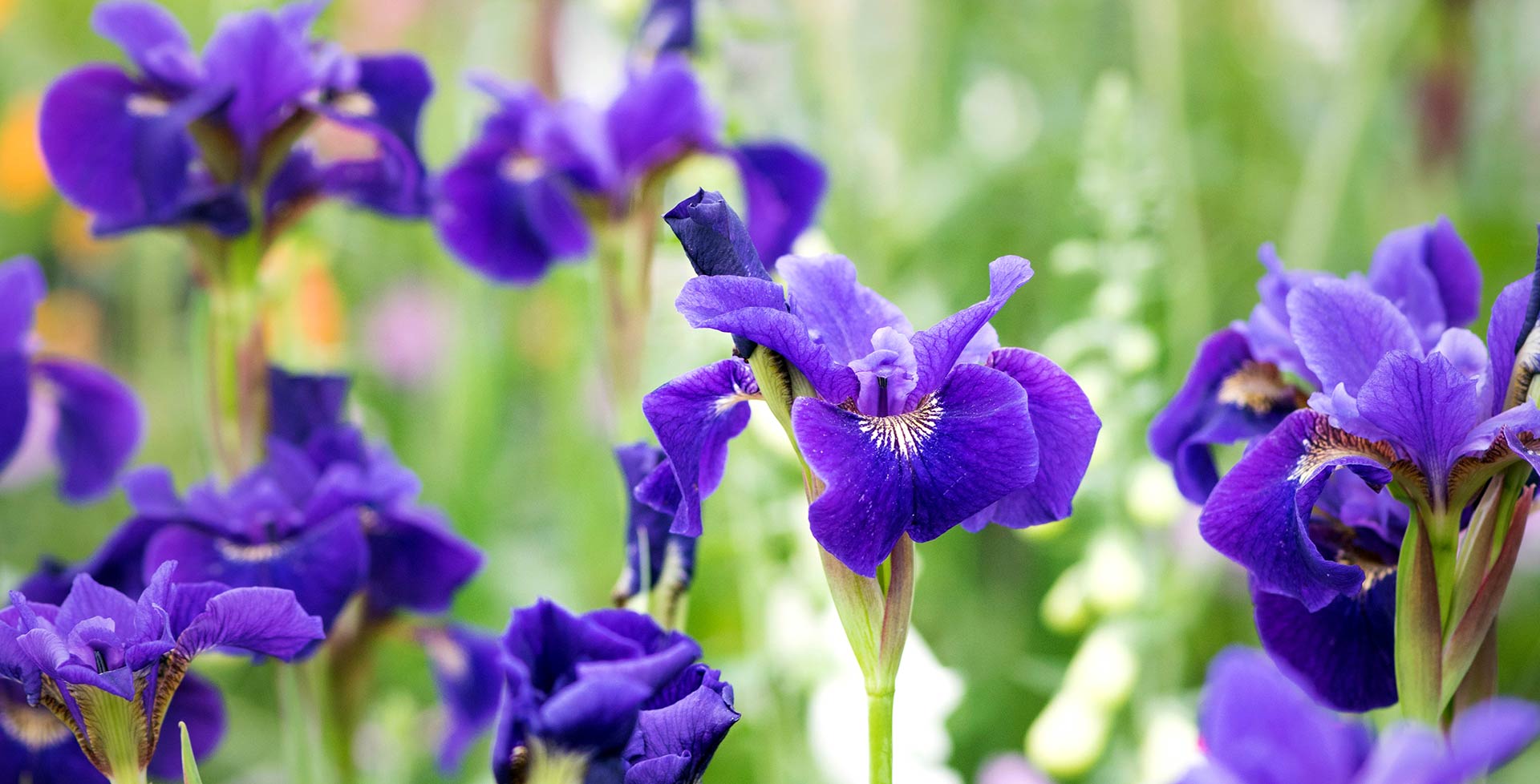
Purple irises are associated with wisdom and compliments. These flowers have been traditionally given to someone who has achieved a significant goal or accomplishment. They convey admiration and respect for the individual’s hard work and dedication. Purple irises can also represent royalty and nobility, as they were once reserved for the elite class.
Blue irises represent hope and faith
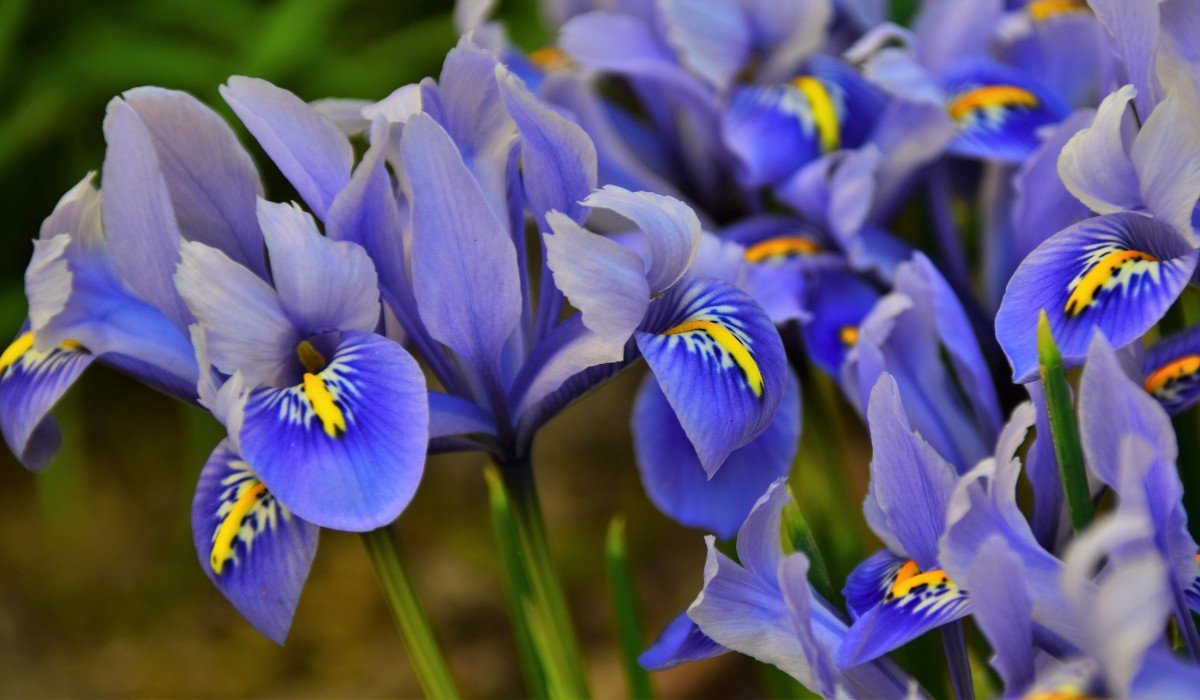
Blue irises hold a symbolic representation of hope and faith. They are often given to someone who is going through difficult times to remind them that better things are coming. Blue irises are also used in religious ceremonies as a symbol of devotion and purity. In ancient Greece, blue irises were believed to ward off evil spirits and protect against disease.
Yellow irises signify passion
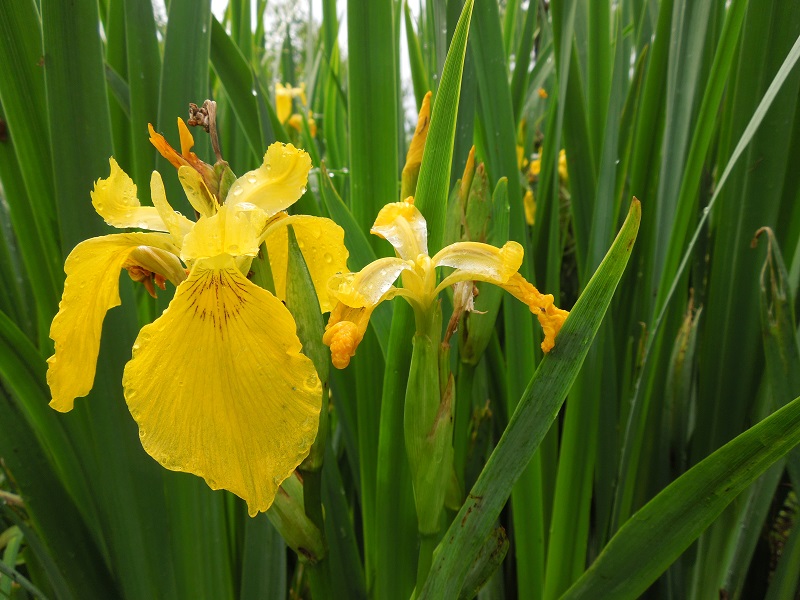
Yellow irises signify passion and energy. They are often given to someone who is embarking on a new journey or starting a new chapter in their life. Yellow irises represent enthusiasm, optimism, and radiance. They are also associated with warmth and joy, making them a popular choice for gift-giving during celebrations.
White irises connote purity
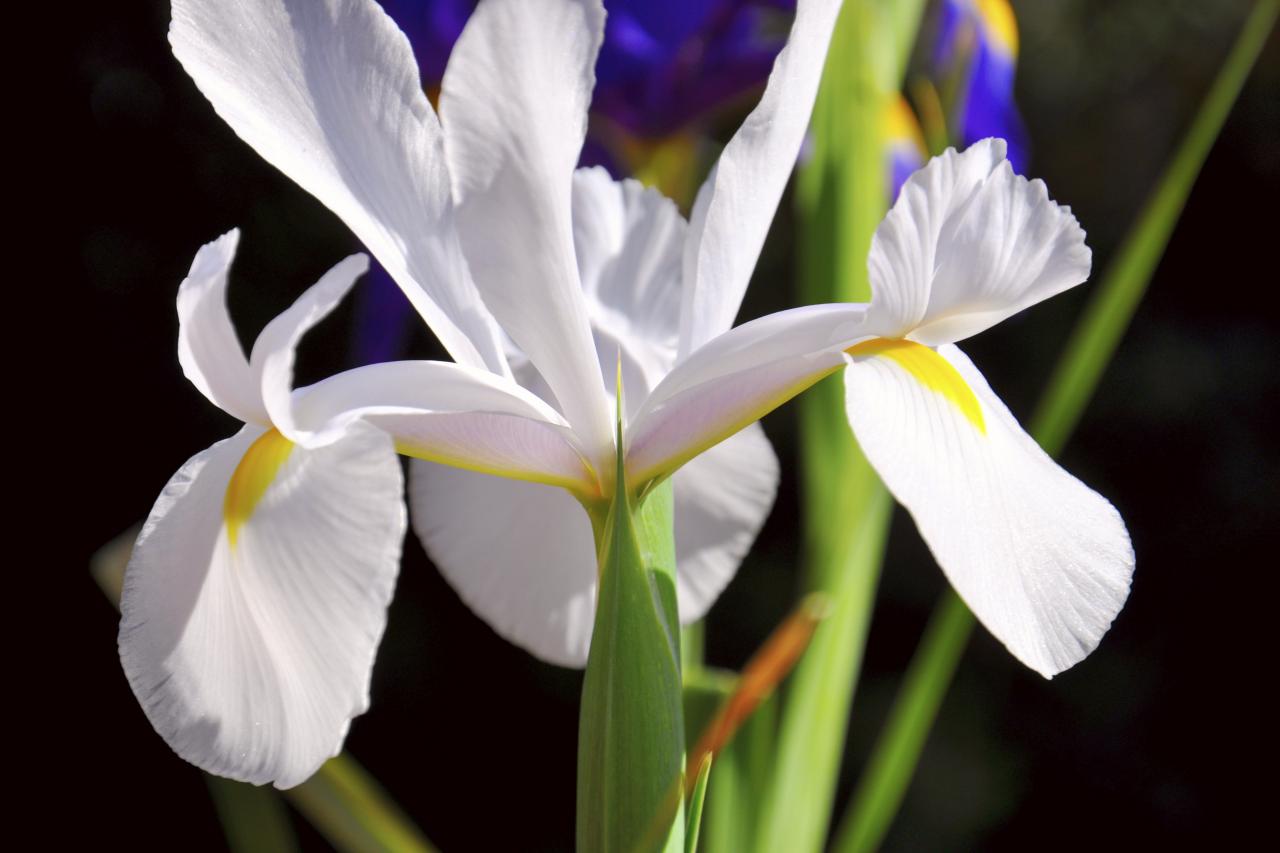
White irises connote purity and innocence. They are often used in weddings and baptism ceremonies, representing the beginning of a new life. White irises also symbolize new beginnings and changes, making them an ideal flower to give someone who is starting a new job or moving to a new home. In some cultures, white irises are used to honor the dead and represent eternal life.
As you can see, the diverse colors and meanings associated with the iris make it a versatile gift. The person receiving it can interpret the sentiment in a way that resonates with them.
Iris Flower Meaning in Cultural Symbolism
Beyond floriography, the iris flower continues to hold symbolic meaning in modern culture:
- French Heritage: The iris is an enduring symbol of France, appearing on their coat of arms, flags and emblems. This nods to the flower’s prominence in Charlemagne’s reign and its meaning of light and life.
- State Flowers: The iris is the state flower of Tennessee and the provincial flower of Quebec. Tennessee appreciates its hardy growing ability and Quebec ties it to their French cultural heritage.
- Medical Symbol: The iris flower is used to represent the eye portion it is named after. Images of an iris adorn eye centers and vision organizations.
- Faith Tradition: Irises, especially blue and purple colors, are perennial Easter flowers celebrated in churches to represent cherished faith. Arranging them delivers a message of hope.
- LGBTQ+ Pride: Lavender irises are popular in LGBTQ+ circles as a send of pride, authenticity and inspiration to continue fighting for human rights. The color has deep ties.
These examples showcase the ongoing relevance of the iris in societal symbols, customs and behaviors. The flower continues to impart a sense of valor, hope, wisdom and light to people and groups worldwide.
Examples of Iris Meanings
Here are some examples of the iris flower meaning in different contexts:
- Weddings: Irises are a popular wedding flower. The purple iris in a bridal bouquet represents wisdom in decision making for the bride’s upcoming marriage. White irises convey the purity and hope for the new union.
- Friendship: Gifting blue or purple irises can symbolize your faith in a friend’s character and hope for your continued relationship. Combining it with daisies or roses strengthens the meaning of standing by one another.
- Condolences: Send a mixed bouquet of purple and white irises to offer hope and shared grief in difficult times. The rainbow of iris colors reminds the recipient that brighter days lie ahead.
- Leadership: A leader may keep purple irises in an office as a symbolic reminder to live and lead with wisdom. The flower encourages integrity in handling complex decisions.
- Spiritual Practice: Some people meditate visualizing a purple iris to focus their thoughts on cultivating wisdom and strengthening personal virtues. The flower’s imagery has power.
As you can see, iris flower meanings span many circumstances. Their unique shape and vibrant colors make them adaptable to conveying personal intention within a given cultural context.
Tips for Gifting Irises
Here are some tips if you plan to give irises to convey meaningful symbolism:
- Select colors purposefully based on the context and sentiment you wish to convey. Purple and blue tones are popular for wisdom and faith meanings while white suits condolences or purity intentions.
- Consider iris presentation. A potted iris plant suits a gift of encouragement that endures over time. Fresh cut irises work better for one-time occasions or bereavement.
- Pair irises with other symbolic flowers. White roses accentuate the theme of purity and innocence. Daisies amplify faith, simplicity and loyal love.
- Know they symbolize hope and positive virtues so avoid bereavement arrangements featuring only irises. Mix with appropriate flowers like lilies or carnations.
- Time your gift well. Irises bloom in late spring and early summer. The flower’s essence suits graduation, weddings, birthdays and spring holidays when we celebrate life blooming.
Conclusion
Throughout history, mythology and culture worldwide the iris flower has maintained deep symbolic meaning. Associated with wisdom and valor, light and life, and faith and admiration, the iris conveys positive virtues we aspire to embody. This layered significance explains the enduring appeal of irises in floriography, religious ceremonies, national pride and day-to-day gift giving. The vibrant iris flower uplifts the human spirit across time and will continue inspiring us for generations to come.

We’re Emma Carole Paradis and Kimberly Carole, the owners and designers of Impeccable Nest, based in Bedford, New Hampshire. A mother-daughter team with a love of design. Originally from Manhattan Beach, California, now based in Bedford, New Hampshire, we bring a Southern California cool and New England tradition to our design. Not only do we work together…we also live together in a multi-generational home…and a home that they are known to design for others.
